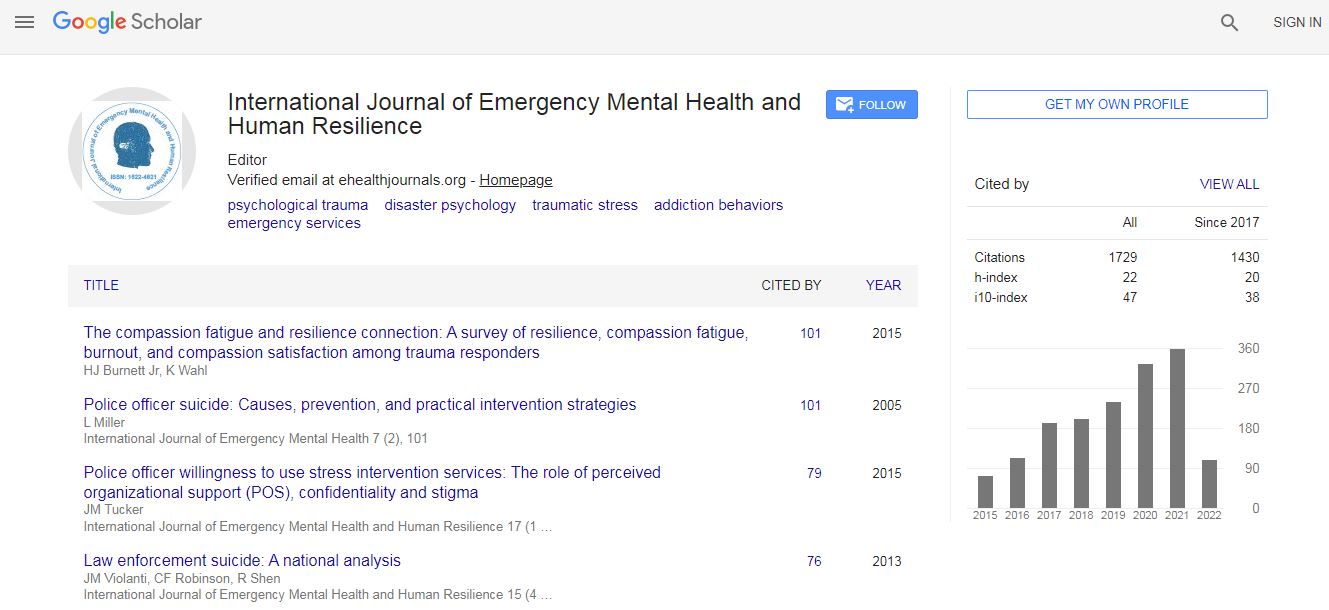Research Article
The Effects of Homicides and Economics on Human and Social Biology: A Mental Health Challenge for a Society?
www.omicsonline.org/scholarly/mental-health-statistics-journals-articles-ppts-list.phpPaul Andrew Bourne1*, Angela Hudson-Davis2, Charlene Sharpe-Pryce3, Cynthia Francis4, Ikhalfani Solan5, Dadria Lewis3, Vivienne L. Quarrie3, Marsha Pabarue3, Shirley Nelson6, Rachael Irving7, Howard Anderson3
1Socio-Medical Research Institute, Jamaica
3Northern Caribbean University, Mandeville, Jamaica
4University of Technology, Jamaica
5South Carolina State University, USA
6Barnett’s Private Resort, Bahamas
7University of the West Indies, Mona, Jamaica
Abstract
Introduction: Violence, particularly homicide, continue to plague Jamaica making it one of the countries with the highest murder rate worldwide with escalating violent espisodes which contribute to the leading cause of death among young males. Yet, homicide is not listed among the major causes of deaths in Jamaica and left out among the non-communicable diseases causing deaths. Objective: The aims of this research is to narrow the gap in the literature by evaluating from an empirical viewpoint the effects of homicides on human and social biology of theliving from a mental health perspective. Materials and Methods: The data for this study were taken from various Jamaica Government Publications including the Demographic Statistics, which provided data on mortality, population, and deaths. Jamaica Constabulary Force and Economic and Social Survey of Jamaica (ESSJ) provided the data for murders; gross domestic product per capita (i.e., GDP per capita) and suicide. Data were recorded, stored and retrieved using the Statistical Packages for the Social Sciences (SPSS) for Windows, Version 21.0. The level of significance that is used to determine statistical significance is less than 5% (0.05) at the 2-tailed level of significance. Ordinary least square (OLS) regressions were used to determine models or factors of health-care seeking behaviour. Stepwise regression was also used to the contribution of each variable leading to the final model. Results: Homicide is strongly correlated with health demands (rxy = 0.681). Of the five variables entered in the OLS regression, three emerged as factors of health-care seeking behaviour (i.e., self-reported physical illness, exchange rate and lninflation rate). This explained 83.6% of the variance in the dependent variable. Of the three factors, only one was positively correlated with dependent variable and the other two were inversely correlated with HSB. A very strong direct statistical correlation existed between the exchange rate and HSB (rxy = 0.832, P < 0.0001) with the other factors being held constant. Conclusion: Homicide must be included in human and social biology, mental health and demographic discourse as it accounts for premature deaths, psychiatric disorders and social disruptions.

 Spanish
Spanish  Chinese
Chinese  Russian
Russian  German
German  French
French  Japanese
Japanese  Portuguese
Portuguese  Hindi
Hindi 